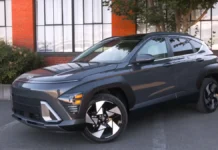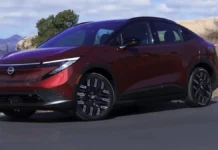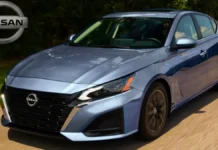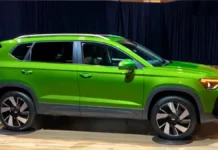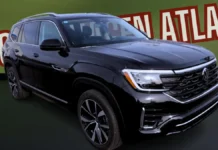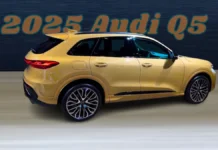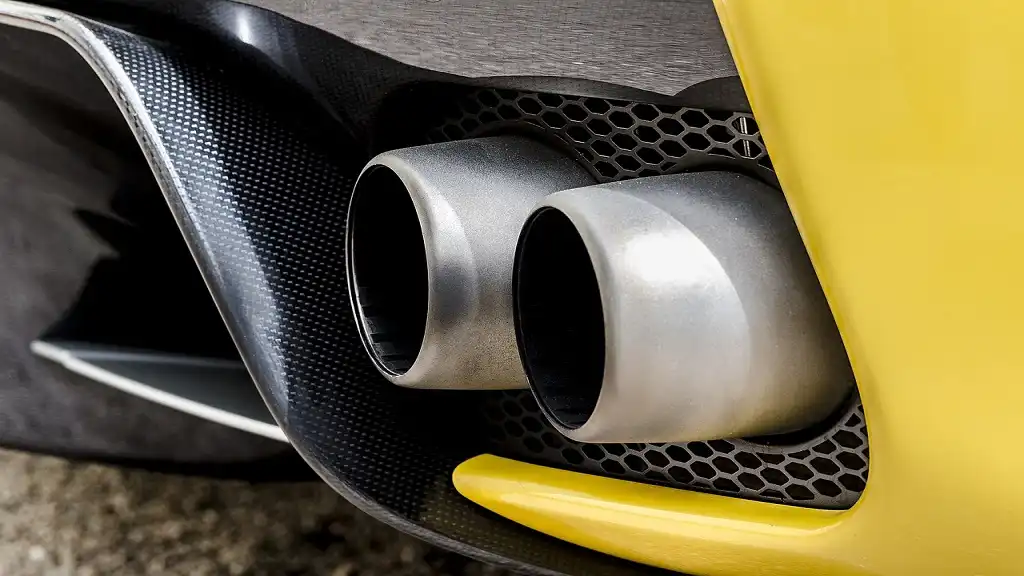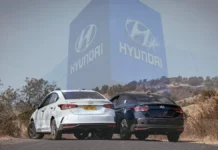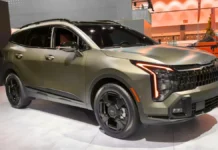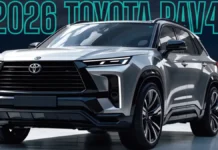The Corporate Average Fuel Economy (CAFE) standards were introduced in the United States in the 1970s as a direct response to the oil crisis of 1973-74. With oil prices soaring and national energy security under threat, the U.S. government sought to reduce fuel consumption and dependency on foreign oil.
1975: The Birth of Corporate Average Fuel Economy
The Energy Policy and Conservation Act (EPCA) of 1975 established CAFE standards, requiring automobile manufacturers to meet specific fuel efficiency targets. Administered by the National Highway Traffic Safety Administration (NHTSA), these standards aimed to improve the average fuel economy of cars and light trucks sold in the U.S.
Key Objectives:
- Reduce gasoline consumption.
- Improve energy independence.
- Lower greenhouse gas emissions.
1980s: Early Challenges and Adjustments of Corporate Average Fuel Economy
In the 1980s, automakers initially struggled to meet the stringent CAFE standards. However, technological advancements, including the development of smaller, more fuel-efficient engines, enabled compliance. The rise of compact cars and early fuel-saving technologies, such as multi-point fuel injection, also contributed to improved averages.
Key Milestones:
- Passenger cars were required to achieve 27.5 miles per gallon (mpg) by 1985.
- Light trucks faced more lenient standards due to their use in commercial and utility roles.
1990s: Stagnation and New Pressures
Fuel economy improvements slowed in the 1990s. The growing popularity of SUVs and light trucks, which were classified differently under CAFE regulations, offset gains made by fuel-efficient passenger cars. This loophole allowed automakers to prioritize larger, less efficient vehicles.
Environmental concerns began to mount during this decade, with activists and policymakers pushing for stricter standards to combat air pollution and climate change.
2000s: A Shift Toward Greener Policies
The early 2000s saw renewed attention on CAFE standards due to rising oil prices, growing environmental awareness, and concerns over climate change.
- In 2007, the Energy Independence and Security Act (EISA) mandated significant updates to CAFE, requiring automakers to reach a fleet-wide average of 35 mpg by 2020.
- Hybrid and electric vehicle technologies began gaining traction, helping automakers meet these ambitious goals.
2010s: Accelerated Progress Under Obama on Average Corporate Fuel Economy
The Obama administration introduced the most aggressive CAFE targets to date, setting a goal of 54.5 mpg by 2025. These measures aimed to:
- Drastically reduce greenhouse gas emissions.
- Promote the adoption of electric and hybrid vehicles.
- Encourage innovation in automotive technologies.
The standards also introduced new flexibility, allowing automakers to earn credits for adopting emissions-reducing technologies, such as stop-start systems and aerodynamic improvements.
2020s: Policy Revisions and Uncertainty
Under the Trump administration, Corporate Average Fuel Economy standards were rolled back, lowering the annual fuel economy improvement requirement from 5% to 1.5%. Critics argued that these changes undermined progress on climate goals.
The Biden administration reinstated a commitment to stricter fuel economy and emissions regulations, aligning with global efforts to combat climate change. The current focus includes encouraging the shift to electric vehicles (EVs) by setting ambitious targets and supporting infrastructure development.
The Future of Corporate Average Fuel Economy Standards
As the U.S. transitions toward a greener economy, CAFE standards remain a cornerstone of federal energy and environmental policy. Key trends include:
- Electrification: Increased adoption of EVs will significantly impact fleet averages.
- Integration of Advanced Technologies: From lightweight materials to autonomous driving, innovation will play a crucial role.
- Global Competition: U.S. automakers must balance Corporate Average Fuel Economy compliance with competitiveness in global markets where emissions standards are even stricter.
CAFE has not only shaped the automotive industry but also played a vital role in reducing the environmental impact of transportation in the U.S., laying the foundation for a cleaner and more sustainable future.
Tighter European Emissions Standards: The Auto Industry Faces New Challenges
Starting January 1, automakers selling vehicles in Europe must further reduce CO2 emissions or face heavy fines. This tightening of regulations is reshaping the automotive market and accelerating the transition toward greener transportation.
What Are These Standards?
The European Union (EU) introduced mandatory CO2 emissions targets in 2009 to combat climate change. At that time, vehicles in Europe averaged 160 grams of CO2 per kilometer (g/km), measured under the New European Driving Cycle (NEDC). These targets were part of a broader strategy to mitigate global warming by reducing greenhouse gas emissions.
The first significant milestone came in 2012, requiring manufacturers to lower the average emissions of 65% of their newly registered vehicles to 130 g/km. By 2015, this requirement expanded to cover all vehicles. Automakers exceeding these targets faced financial penalties, incentivizing compliance.
Why Is It Referred to as Corporate Average Fuel Economy?
Although often associated with the term “CAFE” (Corporate Average Fuel Economy), a U.S. standard introduced in the 1970s to curb fuel consumption, the EU does not officially use this terminology. Instead, the EU’s framework aims at CO2 reduction specifically, setting it apart from the broader goals of fuel economy standards.
Evolving Regulations: From NEDC to WLTP
In 2014, the EU set an ambitious goal: reduce average CO2 emissions to 95 g/km by 2020. This was accompanied by a fine of €95 per excess gram per vehicle. These targets were further adjusted with the transition from the less stringent NEDC to the Worldwide Harmonized Light Vehicles Test Procedure (WLTP) in 2021, providing more accurate emissions data.
Upcoming 2025 Targets
From January 1, 2025, automakers must reduce emissions by 15% compared to their 2021 levels. This means an overall target of 93.6 g/km under WLTP standards. Individual targets remain customized based on vehicle weight and the adoption of electric or plug-in hybrid vehicles.
While some manufacturers embrace these changes, others express concerns. The European Automobile Manufacturers’ Association (ACEA) warns that the industry’s pace of electrification may not meet the upcoming demands, citing slow consumer adoption and economic pressures.
Why Automakers Are Raising Concerns
According to ACEA, the industry could face up to €15 billion in fines by 2025, threatening investments in green technologies. Luca de Meo, ACEA’s president and Renault’s CEO, argues that the high penalties would hinder long-term competitiveness, especially as Asian manufacturers expand their market share.
However, not all automakers agree with these objections. Stellantis’ former CEO, Carlos Tavares, emphasized the importance of adhering to established regulations, stating that manufacturers have had ample time to prepare.
The Role of Credits and Alliances
Automakers can mitigate penalties by pooling emissions with other companies. For instance, Fiat-Chrysler partnered with Tesla to offset its emissions using Tesla’s electric vehicle (EV) credits, a move that also benefited Tesla financially.
Additionally, manufacturers earn credits by increasing their sales of EVs and plug-in hybrids. These strategies incentivize companies to adapt their production lines and sales tactics toward cleaner technologies.
Industry Strategies for Compliance
To avoid fines, automakers are adapting in several ways:
- Promoting EV Sales:
Manufacturers are accelerating the production and sale of zero-emission vehicles. For example, Renault is prioritizing the release of its all-electric Renault 5 to align with regulatory demands. - Discouraging High-Emission Vehicles:
Automakers may raise prices on internal combustion engine (ICE) vehicles to discourage their purchase and balance their overall emissions. - Leasing Options for EVs:
Companies are introducing competitive leasing rates to make EVs more accessible. Jeep, for instance, offers the Avenger EV at the same monthly lease price as its gasoline counterpart.
Challenges for Light Commercial Vehicles
Unlike passenger vehicles, light commercial vehicles (LCVs) are struggling to meet emission standards. With few LCV manufacturers prepared for the 2025 targets, significant fines loom over the sector. This creates pressure to accelerate the development of low-emission LCVs or adopt hybrid and electric alternatives.
Looking Toward 2030
The EU’s “Fit for 55” initiative has set even stricter emissions targets for 2030, requiring a 55% reduction from 2021 levels. These ambitious goals will likely drive further innovation and collaboration across the industry but may also intensify competition and financial strain.
The Consumer Impact
For consumers, the shift toward lower emissions could mean:
- Lower Prices for EVs:
Increased competition may drive down the cost of electric vehicles, making them more affordable for everyday buyers. - Higher ICE Vehicle Prices:
To offset compliance costs, automakers might raise prices on traditional gasoline and diesel models. - Expanded Leasing Options:
Affordable leasing terms could make EVs more appealing, particularly as governments reduce subsidies.
Navigating the Transition
The evolution of fuel economy standards, from the introduction of the Corporate Average Fuel Economy (CAFE) standards in the U.S. to the European Union’s stringent CO2 emission targets, has played a pivotal role in shaping the global automotive industry. Over the decades, these regulations have driven technological innovation, shifted consumer preferences, and set the stage for a greener future. While challenges remain, particularly in meeting increasingly ambitious targets, the shift towards electric vehicles, advanced technologies, and international cooperation offers a promising path forward.
The future of fuel economy standards will continue to evolve as both the U.S. and the EU intensify efforts to combat climate change. For automakers, the key to navigating this transition lies in balancing regulatory compliance, technological innovation, and consumer demand. By accelerating the adoption of electric and hybrid vehicles, reducing emissions, and embracing greener production methods, the automotive industry can not only meet regulatory expectations but also contribute to a more sustainable and energy-efficient future.



